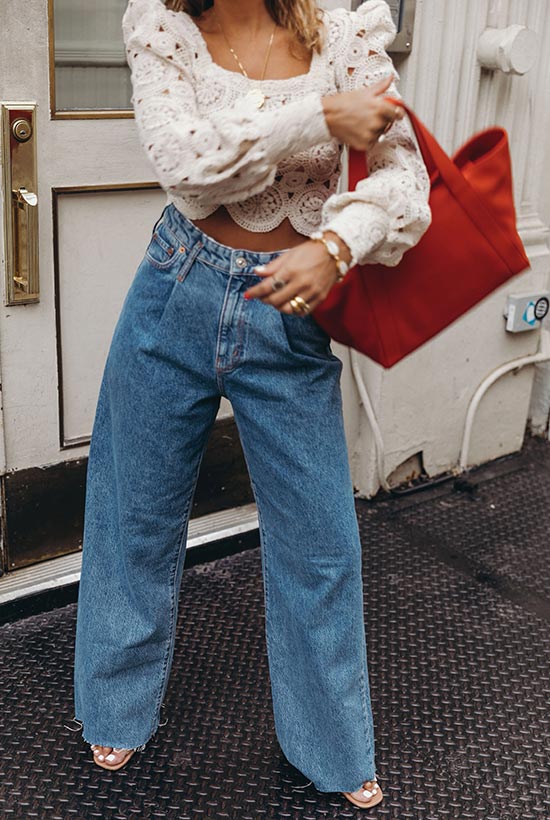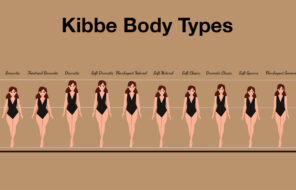The other day when I was walking down the street, I caught myself counting how many people wore jeans in their everyday life. I scoped out every possible design of denim of every possible wash outstandingly being right for every body shape. Isn’t it fantastic how a single garment piece could pave its way through every walk of life to be fairly called the most popular fashion item ever?

Let’s turn back the hands of time to explore the history of jeans and pass through its amazing evolution – from working uniform to the symbol of rebellion to the first-class fashion fad with many other mannerisms in between.
The Etymology of Jeans and Denim
First things first, where do words jean and denim come from? According to the historians, the Italian sailors in the 15th century used to wear pants out of cotton corduroy, a fabric type exported from the city of Genoa. Gênes, the French word for Genoa is supposed to be the origin of the present-day widespread word “jeans”.
As for the “denim”, it is a more sturdy twill fabric of which the contemporary jeans are made. In an effort to reproduce the jean fabric, the weavers in Nîmes, France developed another fabric that was later called denim – Serge de Nimes – de Nimes – “denim”.
The fabric was later dyed into indigo derived from the plant Indigofera tinctoria. That was the birth of the “blue jeans” phenomenon nailing it down for several decades in a row.
Read Next: Best Vintage Jeans for Women
Who Stands Behind Blue Jeans?
Let us just come clean that very few of us have really explored the history to find out when and how the iconic blue jeans breezed in and became so ubiquitously used by everybody regardless of age, gender and nationality. But it would be worth doing it, for sure. Before making tracks for vintage denim shopping, come with us to take a trip down the memory lane and start rocking the jeans with more insight.
It was in 1853 that Levi Strauss, a 24-year-old vendor of Jewish origin, whose father was a tailor, immigrated to the United States from Bavaria, Germany. A roll of canvas was the only heritage left to him by his father, which he decided to use to make his living.
Gold Rush in California was in high gear at the time with myriads of miners seeking their fortune, and Levi Strauss took time by the forelock starting to sew tents for gold miners. It was until the day when one of the gold miners told Levi that if he had had a solid pair of pants he would have slept anywhere not in a tent.
And Levi took no time to tailor a pair of sturdy pants out of the brown canvas, which he sold to the miner at just 1 dollar and 20 cents. The brown sturdy pants became popular among gold miners.

Blue Period Is Taking up
In the 1860s, Levi Strauss successfully replaced the brown canvas fabric with heavy twill-woven cotton, which is called denim today, while the indigo dye gave birth to the Blue Jeans.
Copper Rivets: Making Jeans More Durable
In 1871 a new name popped up in the history of blue jeans. Jacob Davis, a Latvian émigré and tailor had a brilliant idea to reinforce the pockets of the jeans with copper rivets to prevent them from being torn under the weight of gold nuggets.
But since he didn’t have enough financial means to patent the smart solution, Jacob Davis reached out to Levi Strauss and as a result on May 20, 1873, Levi Strauss and his partner, Jacob Davis, received U.S. Patent 139,121, for an “Improvement in Fastening Pocket-Openings”. The patented “XX” jeans were later dubbed Levi’s 501.
Did You Know?
• Jeans were originally called “waist overalls”.
• In 2001 jeans were banned from the Oval Office by George W. Bush.
• Want to know the most vintage jeans ever? In 1998 a pair of 115-year-old jeans was detected in a California mine.
• In the ‘50s jeans were not considered respectable in the USA. They were banned in social places, like schools or theatres as a sign of rebellion.
• Do you know why copper rivets are placed only on front pockets? Originally black pockets featured rivets as well, but as many started complaining of them scratching saddles and chairs, the black rivets were removed.

Popularization of Levi’s Jeans: How It Became a Cool Thing
Gold Rush is over and gold miners are back on their way home. So what to do with this working uniform that served around so effectively. Right! To develop it into something really, really cool.
The Levi’s jeans start playing for high stakes in American Westerns. Starting from Stagecoach rifle-toting Ringo Kid rocking a pair of blue jeans to the outlaw motorcycle gang film the Wild One starring bad boy Marlon Brando in Levi’s 501 to the River of No Return with all-time beauty icon Marilyn Monroe raising the bar of jeans even higher, the denim grows to be a real feast for the eye.
Need an even cooler factor? In 1953, Marlboro launched a marketing campaign “Marlboro Man” featuring denim-wearing masculine cowboys.
Did You Know?
• Originally jeans for men and women could be differentiated by the zipper. Men’s jeans had zippers on the front, while the jeans for women were distinguished by the side zipper.
• Who was the initiator of washing new pairs of jeans for faded and worn-out effect? The first retailer was a boutique in the New York East Village called “Limbo”.
• In order to dye each pair of jeans, only a few grams of indigo is required.
• How did blue jeans become popular outside the USA? Thanks to the American soldiers during World War II who were wearing blue jeans when off duty.
• The most expensive jeans ever are Secret Circus jeans – $1.3 million per pair. That’s because the design includes 15 diamonds.
Hippie Movement and Jeans
The early ‘60s were marked as the start of hippie movement, a liberal counterculture. Hippies created their own communities, listened to psychedelic music, embraced the sexual revolution, used drugs, maintained long hair and wore JEANS. Jeans took another shape becoming the equivalent to rebellion and nonconformity rather than working class uniform.
Jeans as a Fashion Item
In 2000 Time magazine names Levi’s 501 the “Fashion Item of the 20th Century”. Jeans started to become a real fashion fad, outperforming such run-after fashion items as mini skirt and LBD. Denim items entered a crazy phase of multiple transformations and designer solutions to measure up to the expectations of anyone and to look equally as chic on any occasion.
Did You Know?
• Unlike original jeans made of pure cotton, the modern skinny jeans include a bit of an elastic fabric known as ‘Elastene’ that makes them stretchable.
• Each American owns 7 pairs of jeans on average.
• A single 500-pound bale of cotton is enough to produce 200 pairs of jeans.
Photos via Instagram




